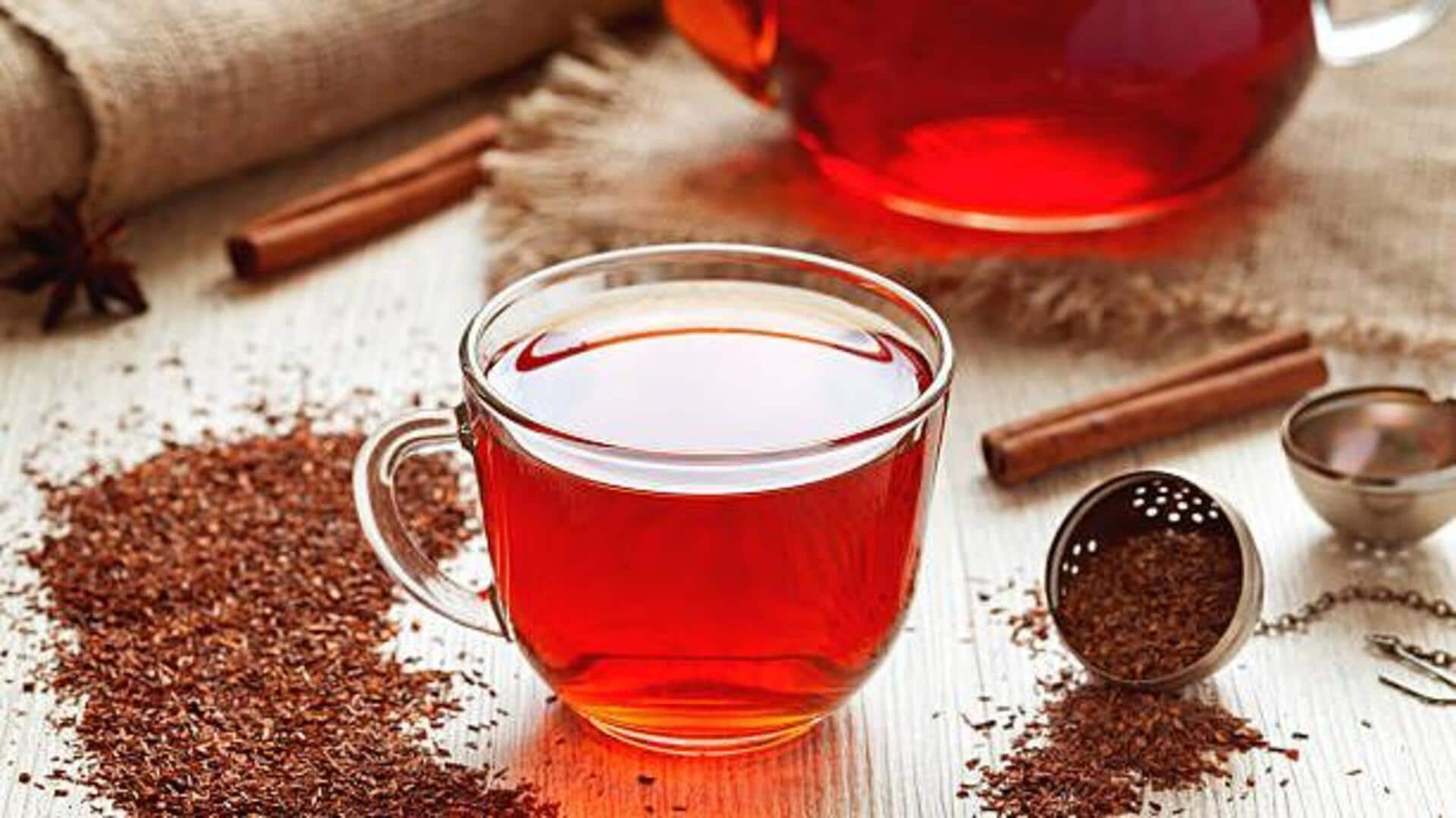
Why wellness lovers are switching to rooibos tea
What's the story
Rooibos, a one-of-a-kind herbal tea from South Africa, is taking the world by storm for being caffeine-free and its possible health benefits.
With its rich red color and naturally sweet taste, rooibos is typically consumed as a calming beverage.
It is loaded with antioxidants and other beneficial compounds that may promote well-being.
Here's a look at all things rooibos tea, from its roots, health benefits, how to prepare it, and more.
History
Origins of rooibos tea
Rooibos tea is steeped in history. It comes from the mountainous regions of South Africa, where it has been enjoyed for centuries by the indigenous communities.
The plant used for making this tea, Aspalathus linearis, flourishes in the region's distinctive climate.
Traditionally hand-harvested and fermented to develop its flavor profile, rooibos has become an indispensable part of South African culture.
Wellness
Health benefits of rooibos
Rooibos tea is known for its high antioxidant content, which may protect cells from damage by free radicals.
It also contains polyphenols that have anti-inflammatory properties, which may help reduce inflammation in the body.
Rooibos is also caffeine-free, which makes it an ideal option for people looking to cut back on caffeine without compromising on taste.
Preparation
How to prepare rooibos tea
Preparing rooibos tea is extremely easy and can be done with loose leaves or teabags.
To make a cup of rooibos tea, steep one teaspoon of loose leaves or one teabag in boiling water for five to seven minutes depending on the strength desired.
The longer you steep, the more flavors develop, resulting in a richer taste experience.
Versatility
Culinary uses beyond tea cups
Apart from being savored as a hot drink by itself or with milk and honey added according to taste, rooibos can also be added to various food preparations such as smoothies or desserts like cakes.
Its natural sweetness elevates flavors without overpowering them when used innovatively in recipes across various cuisines around the world today.